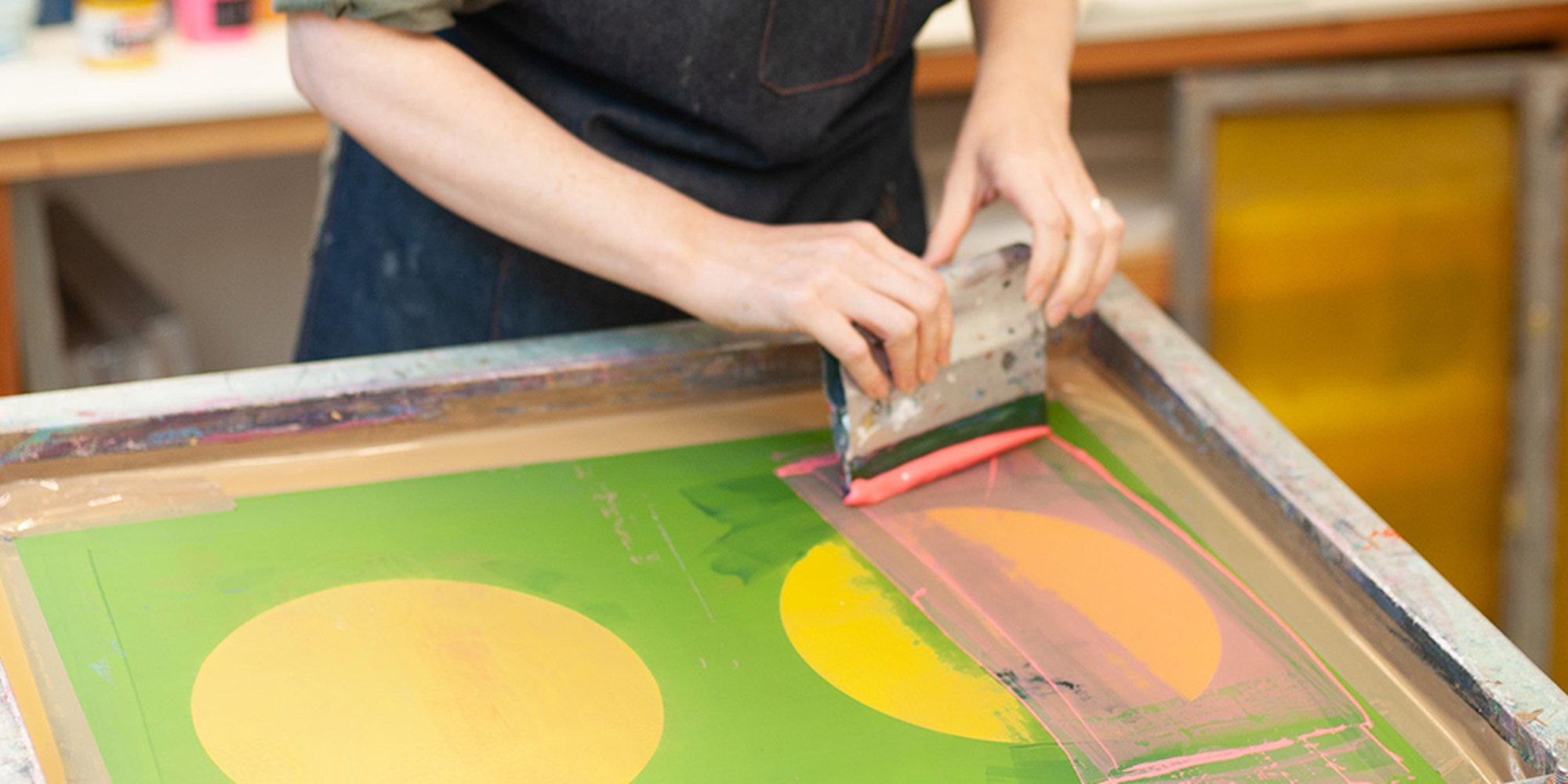The Crucial Overview to Recognizing Screen Printing and Its Versatile Utilizes
Screen printing has an abundant background that goes back to old times, advancing right into a sophisticated strategy used throughout various sectors today. This overview checks out the details of the screen printing process, describing its applications in style, marketing, and home décor - 10:9 Design Texas. Comprehending these basics can open innovative capacity for both business and imaginative tasks. The complying with areas will certainly disclose vital ideas and techniques to enhance one's screen printing ventures
The History of Screen Printing
Although screen printing has roots that map back centuries, its advancement shows the imaginative and technological developments of various cultures. Coming from ancient China, the method was initially utilized for embellishing textiles and later spread to Japan, where it became essential to Ukiyo-e woodblock printing. The method changed to Europe in the 18th century, where it gained popularity among artisans and industrial printers. The development of photo solution in the 20th century reinvented screen printing, permitting more intricate styles and greater efficiency. Artists like Andy Warhol even more moved its appeal, making use of the medium to develop iconic works that blended commercialism and fine art. By the late 20th century, screen printing had actually developed itself as a versatile method, utilized in vogue, advertising and marketing, and great art. Today, it continues to advance, incorporating electronic innovation and expanding its applications throughout numerous markets.
The Screen Printing Refine Explained
Screen printing changes creative visions right into tangible styles through a collection of accurate actions. A picture is created and then transferred onto a screen, typically made of fine mesh material stretched over a framework. A light-sensitive emulsion is put on the screen, which is subjected to light, solidifying in areas not covered by the image. After washing out the unhardened solution, a pattern is created.
Next, the screen is positioned over the substrate, whether it be fabric, paper, or another material. Ink is after that pressed with the open areas of the pattern making use of a squeegee, depositing the design onto the substratum listed below. This procedure can be repeated for several shades, calling for different screens for every shade. Finally, the published item is healed using heat to guarantee the ink sticks effectively, causing a resilient, vibrant design on-line.
Sorts Of Screen Printing Techniques

Additionally, specialized strategies, such as discharge screen printing, eliminate color from the textile to produce softer prints, while aluminum foil screen printing uses metal aluminum foil to attain a glossy coating (10:9 Design Abilene). Each strategy uses distinct features, dealing with various creative demands and manufacturing scales, ultimately increasing the possibilities within the screen printing domain name
Applications of Screen Printing in Various Industries

Additionally, the signs and advertising markets make use of screen printing for creating distinctive go to this website displays and banners. This technique permits for bold colors and complex layouts that capture attention. In electronics, screen printing is used for using conductive inks to circuit boards, vital for part links. Moreover, the home design market accepts screen printing to generate distinct layouts on fabrics and wall art. On the whole, screen printing acts as a critical tool across diverse fields, enhancing products with personalized and visually appealing graphics.
Tips for Successful Screen Printing Projects
While carrying out a screen printing project, careful attention to detail can considerably enhance the final outcome. Picking top notch products is necessary; this includes the screen, inks, and substrates. Using ideal mesh matters can impact ink deposition and detail resolution. Preparation is just as crucial; complete cleaning of screens and correct direct exposure times ensure crisp prints.
Next, accurate enrollment is vital for multi-color prints. Using alignment devices can assist achieve specific layering. Furthermore, testing prints on scrap products before production aids determine potential concerns without squandering sources.

Frequently Asked Inquiries
What Products Are Ideal for Screen Printing on Textile?
Cotton and polyester blends are suitable for screen printing on textile as a result of their toughness and ink absorption. In addition, specialized materials like silk or canvas can create distinct textures and coatings, boosting the general style quality.
How Do I Tidy and Maintain Screen Printing Devices?
To keep and cleanse screen printing devices, one ought to routinely wash displays with proper solvents, examine squeegees for wear, oil moving parts, and shop all products in a dry, dust-free setting to extend their lifespan.
What Are the Ecological Effects of Screen Printing?
Screen printing can have significant ecological impacts, consisting of chemical waste from solvents and inks, water usage throughout cleaning procedures, and energy consumption. Environmentally friendly products and lasting practices are crucial for lessening these negative impacts.
Can Screen Printing Be Done at Home Properly?
Screen printing can be successfully done at home with the right materials and techniques. Hobbyists can develop quality prints, though success relies on their skill level, tools, and understanding of the process included.
What Are the Costs Connected With Beginning a Screen Printing Company?

Beginning a screen printing business involves expenses for devices, products, and work space. First expenses usually vary from a couple of hundred to numerous thousand bucks, relying on the range, quality of machinery, and desired production capacity.
Screen printing has a rich history that dates back to ancient times, developing into an advanced method made use of across different markets today. Another technique, rotary screen printing, employs cylindrical screens, facilitating continuous printing on material rolls, thus improving effectiveness for check it out massive manufacturings. Additionally, specialized strategies, such as discharge screen printing, get rid of color from the material to produce softer prints, while foil screen printing applies metallic foil to attain a shiny surface. In the fashion industry, screen printing is widely used to produce lively styles on apparel, enabling brand names to display their distinct styles. Cotton and polyester blends are ideal for screen printing on fabric due to their longevity and ink absorption.